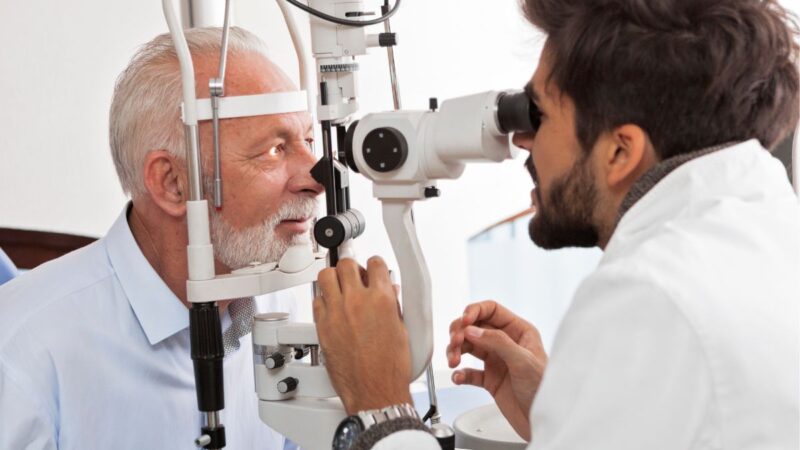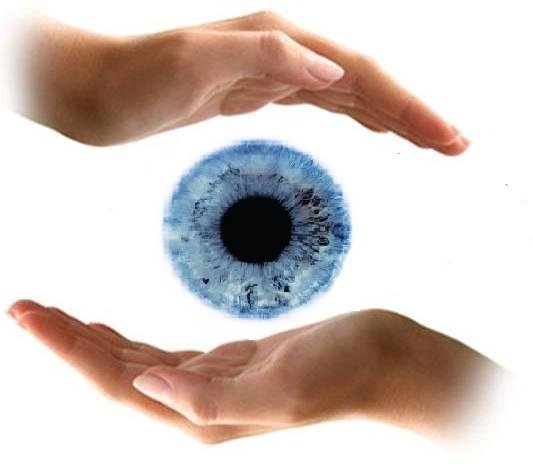Expert Retina Service Near Me: Leading Clinic Offers Comprehensive Care
Expert Retina Service Near Me: Leading Clinic Offers Comprehensive Care
Blog Article
Discovering the State-of-the-Art Technologies Utilized for Treating and detecting Eye Problems
In the world of ophthalmology, the evolution of innovation has actually significantly improved the devices readily available for diagnosing and treating different eye problems. From innovative imaging technologies that offer in-depth understandings right into ocular structures to robotic-assisted surgical procedures that use unmatched precision, the landscape of eye care is continuously progressing.

Advanced Imaging Technologies
Advanced Imaging Technologies have actually transformed the area of ophthalmology by offering thorough and accurate visualization of the eye structures. Optical Comprehensibility Tomography (OCT) stands apart as a vital modern technology in this world. OCT utilizes light waves to catch high-resolution cross-sectional pictures of the retina, allowing for the identification of minute architectural adjustments. This non-invasive strategy help in the early discovery and tracking of various eye conditions such as macular deterioration, diabetic person retinopathy, and glaucoma.
Moreover, Fundus Digital photography is an additional essential tool in ophthalmic imaging. This technique involves catching in-depth pictures of the rear of the eye, consisting of the retina and optic disc. Fundus Digital photography helps in recording the development of eye illness, examining therapy effectiveness, and informing individuals regarding their eye health and wellness.

Robotic-Assisted Surgery
Robotic-assisted surgeries have considerably advanced the capabilities of ophthalmic surgical treatment, ushering in a new era of precision and efficiency in dealing with numerous eye problems. By incorporating robot innovation into surgical procedures, eye doctors can accomplish exceptional accuracy and control, bring about boosted client outcomes.
One of the primary advantages of robotic-assisted surgical treatment in ophthalmology is the boosted mastery and stability it uses to cosmetic surgeons. The robot arms can carry out precise motions with a high degree of accuracy, allowing for fragile treatments with minimal invasiveness. This degree of accuracy is particularly advantageous in surgeries entailing the retina, where even small mistakes can have significant effects for an individual's vision.
Additionally, robotic-assisted medical systems give real-time imaging and comments to the surgeon, allowing them to make informed choices during the treatment. This innovation enhances the doctor's situational understanding and permits for modifications to be made promptly, making sure optimal outcomes for the client.
Expert System in Diagnostics
With the development of sophisticated innovations boosting surgical accuracy in ophthalmic procedures, the assimilation of Artificial Intelligence in diagnostics has actually emerged as an essential development changing the field of eye care. Expert System (AI) formulas are being increasingly used to assess complicated data from imaging innovations like optical comprehensibility tomography (OCT) and fundus photography to help in the very early discovery and accurate diagnosis of various eye problems. These AI systems can successfully recognize patterns and anomalies in images that may not be discernible to the human eye, making it possible for quicker medical diagnosis and therapy planning.
AI formulas can additionally predict disease progression, recommend customized treatment plans, and evaluate the useful content efficiency of interventions. By improving the diagnostic process, AI not only enhances the efficiency of eye treatment specialists yet additionally boosts person end results by making it possible for prompt interventions. As AI remains to advancement, its role in diagnostics is anticipated to increase, supplying brand-new possibilities for early intervention and tailored therapy in the area of ophthalmology.
Gene Therapy Developments
In the realm of ocular innovations, current strides in gene treatment technologies have sparked significant passion among researchers and medical care experts alike. Gene treatment holds enormous guarantee in revolutionizing the therapy of different eye conditions by targeting the hidden genetic reasons. By introducing hereditary product into cells Home Page to make up for unusual genetics or to supply a missing genetics, gene treatment provides a customized approach to attending to inherited eye problems such as retinitis pigmentosa, Leber hereditary amaurosis, and others that were formerly thought about untreatable.

As research in genetics therapy remains to breakthrough, the capacity for tailored therapies for a broader variety of eye problems grows, offering brand-new hope for people with hereditary eye illness.
Virtual Fact Rehabilitation
Digital truth rehabilitation has actually become a sophisticated technique in enhancing the recuperation and rehabilitation procedures for individuals with numerous visual problems. refractive surgeries in al. By read the full info here simulating real-world settings through immersive innovation, virtual truth offers a special system for vision therapy and recovery. This innovative technique enables individuals to participate in interactive exercises and tasks designed to enhance aesthetic acuity, deepness perception, eye sychronisation, and total aesthetic functioning
One trick advantage of online fact rehabilitation is its capability to tailor treatment programs based upon the specific needs and capacities of each patient. With real-time responses and monitoring, healthcare experts can track progression, adjust interventions, and supply personalized like enhance end results. Additionally, online reality innovation can produce a safe and controlled room for people to exercise aesthetic tasks, conquer difficulties, and develop self-confidence in a digital setting before transitioning to real-world situations.
Final Thought
Finally, the advancements in imaging modern technologies, robotic-assisted surgeries, synthetic intelligence diagnostics, gene therapy developments, and virtual reality rehabilitation have substantially improved the diagnosis and treatment of eye problems. retina service near me. These modern innovations have changed the area of ophthalmology, permitting even more precise and efficient treatments. As innovation continues to evolve, the future of eye care looks promising with the possibility for a lot more cutting-edge solutions to improve person outcomes
In the world of ophthalmology, the evolution of innovation has dramatically improved the devices offered for diagnosing and dealing with different eye conditions. Fundus Digital photography helps in documenting the development of eye diseases, reviewing therapy efficacy, and enlightening clients about their eye health and wellness.
Synthetic Knowledge (AI) algorithms are being significantly used to assess complicated information from imaging innovations like optical coherence tomography (OCT) and fundus digital photography to assist in the very early discovery and precise medical diagnosis of various eye problems.In conclusion, the innovations in imaging technologies, robotic-assisted surgical procedures, synthetic knowledge diagnostics, gene therapy technologies, and virtual truth recovery have substantially improved the diagnosis and therapy of eye problems. As technology proceeds to advance, the future of eye care looks appealing with the possibility for even more ingenious remedies to improve client results.
Report this page